This article was medically reviewed by Pradeep Adatrow, DDS, MS. Dr. Pradeep Adatrow is the only board certified Dentist, Periodontist, and Prosthodontist in the southern United States. With over 15 years of experience, Dr. Adatrow specializes in dental implants, TMJ treatments, periodontal plastic surgery, surgical and non-surgical periodontics, bone regeneration, laser treatments, and soft tissue and gum graft procedures. He received a BS in Epidemiology and Biostatistics from the University of Alabama and earned his Doctor of Dental Surgery (DDS) degree from the University of Tennessee College of Dentistry. Dr. Adatrow then completed a three-year postgraduate program in periodontics and implantology at Indiana University and went on to complete another three-year postdoctoral program in advanced prosthodontics from the University of Tennessee. He also serves as a full-time professor and the Director of Surgical Prosthodontics at the University of Tennessee. Dr. Adatrow received the Dean's Junior Faculty Award and the John Diggs Faculty Award, and he was inducted into the Deans Odontological Society. He is board certified by the American Board of Periodontology and is a Fellow of the prestigious International College of Dentistry – a feat that only 10,000 others worldwide can claim.
There are 10 references cited in this article, which can be found at the bottom of the page.
wikiHow marks an article as reader-approved once it receives enough positive feedback. In this case, 92% of readers who voted found the article helpful, earning it our reader-approved status.
This article has been viewed 283,782 times.
A dental crown is an artificial portion of a tooth that is fixed in place to a natural tooth. These are designed to be long-term (though not permanent) solutions when created and applied by a dentist. Sometimes, however, a crown can come loose or fall out—even from something as simple as biting into crunchy food. Luckily, it is possible to temporarily keep the crown in place until a dentist can professionally reattach or replace it.
Steps
Inspecting the Crown and Tooth
-
1Get the crown out of your mouth. Carefully retrieve the crown from your mouth so that you do not drop it or swallow it. If you have already swallowed it, you are not in danger, but the crown will need to be replaced.[1]
- If you have lost the crown, you can coat the tooth surface with an over-the-counter dental cement (available at many pharmacies) to temporarily seal the area until a dentist can repair it.
-
2Call a dentist as soon as possible. Losing a crown is not a true dental emergency. Still, you should contact the dentist so the crown can be repaired. The dentist can tell you what to do and how to care for it until you can get it fixed.[2]
- Your tooth will be weak, possibly sensitive, and at a greater risk of decay until the crown is fully prepared so do not delay in contacting your dentist for a solution.[3]
Advertisement -
3Inspect the tooth area and crown. If no pieces have chipped off of either the tooth or the crown, you should be able to set the crown temporarily back in place.[4] Contact a dentist and do not attempt to reattach the crown if the crown is filled with hard material or a portion of your tooth, rather than mostly hollow.[5]
- Your crown may be attached to a metal post, and it is hard to fit the sharp tip into the right place, especially if the crown is on a molar. Contact your dentist for the best guidance.
-
4Be cautious until you can reattach the crown. Keep the crown in a secure place until you can reattach it, so that you don't lose it. Avoid chewing on tooth that lost the crown until you can reattach it. This will help prevent tooth decay and any further damage to the tooth.
Fitting the Crown in Place Temporarily
-
1Clean the crown.[6] Carefully pick any old cement, food, or other material off of the crown if you can, using a toothbrush, a toothpick, or dental floss, and rinse the crown with water.
- Try using a paperclip or a toothpick to remove excess cement from the crown.[7]
- If you clean the crown and tooth over a sink, make sure to plug it first so that you don’t accidentally drop it down the drain.
-
2
-
3
-
4Try to fit the crown in place without any adhesive. Testing the crown with a dry fit will help you make sure that you can put it back in place. Set the crown in place and bite down very gently.
- The crown should not feel like it is sitting higher than your other teeth. If it does, it may need to be cleaned further.
- If the crown does not seem to fit right one way, turn it and try another way. It is designed to fit securely, so it may take some time to get it properly in place.
- If you cannot fit the crown in place without cement, do not try to fit it in with cement.
-
5Choose an adhesive. If you are successfully able to set the crown in place in a dry fit, then you can try to adhere it to the underlying tooth. Dental cements are designed for the job and will secure the crown best, though other materials will work in a pinch. Choose an adhesive based on what is available to you.
- Use dental cement for a temporary fix. You can find this at most pharmacies or grocery stores.[12] This is different than denture cream; the container of dental cement should be labeled as a fix for a crown or cap that has fallen off. Some cements have to be mixed, while others are pre-mixed. Follow directions carefully.
- You can also use temporary dental filling material. This is also widely available at pharmacies.
- Denture adhesive will also work in a pinch.[13]
- If you can’t get denture cement, a loose slurry of flour and water can be used instead.[14] Mix a small amount of flour and water together to make a smooth, loose paste.
- Try using sugar-free gum if you just need to hold the crown in place for a short time.[15]
- Do not use superglue or household adhesives to hold the crown in place.[16] While many people are tempted to do this, it can irritate your tissue and tooth. Doing this is worse than going without a crown for a little while.
-
6Apply your chosen adhesive to the crown and carefully set it in place on your tooth. Just a small dab of adhesive spread on the interior surface of the crown should be sufficient.[17] Use a mirror to help you see where to place the crown, especially if the tooth is hard to reach. You can also ask someone else for assistance.
- Be patient—it can sometimes take a few tries to ensure that the crown fits well.[18]
-
7Tap your teeth together.[19] Gently bite down to test the position and fit of the crown, and to get it exactly into place.[20]
- Before fitting the crown, dry the area with gauze or a towel to clean any saliva in that area. You want the area to be totally dry.
- Depending on the directions provided with the particular cement you are using, you may need to clamp down on the crown for a few minutes, then carefully remove any excess cement from around the tooth or gum.
-
8Floss carefully to remove any excess cement between the teeth. Don’t pull up on the floss to get it out—instead, slide it between the teeth while biting down gently. This will stop you from accidentally removing the crown again.
Waiting to See a Dentist
-
1Schedule an appointment to see your dentist. Although the temporary crown may hold for a few days or even weeks in the best-case scenario, you will need to see a dentist as soon as possible for a more permanent reattachment or replacement.[21]
-
2Eat and drink with caution until the crown is repaired by a dentist. Avoid eating on the side of the mouth with the crown.[22] Remember that the crown is only held temporarily in place, so avoid any excessively hard or chewy foods until you can see a dentist.
-
3Deal with any pain. If your tooth or jaw is sensitive or in pain because of the temporary crown fix, dab clove oil onto a cotton swab and gently apply to the gum and tooth area. This will numb the site. You can often find clove oil in pharmacies or in the spice aisle of supermarkets.
Expert Q&A
Did you know you can get expert answers for this article?
Unlock expert answers by supporting wikiHow
-
QuestionDoes it hurt to get a crown put back in?
 Cristian Macau, DDSDr. Macau is an oral surgeon, periodontist, and aesthetician at Favero Dental Clinic in London. He received his DDS from Carol Davila University of Medicine in 2015.
Cristian Macau, DDSDr. Macau is an oral surgeon, periodontist, and aesthetician at Favero Dental Clinic in London. He received his DDS from Carol Davila University of Medicine in 2015.
Doctor of Dental Surgery
-
QuestionHow much does it cost to replace a dental crown if I have no insurance?
 Cristian Macau, DDSDr. Macau is an oral surgeon, periodontist, and aesthetician at Favero Dental Clinic in London. He received his DDS from Carol Davila University of Medicine in 2015.
Cristian Macau, DDSDr. Macau is an oral surgeon, periodontist, and aesthetician at Favero Dental Clinic in London. He received his DDS from Carol Davila University of Medicine in 2015.
Doctor of Dental Surgery
-
QuestionWhat can I use to reattach a crown?
 Pradeep Adatrow, DDS, MSDr. Pradeep Adatrow is the only board certified Dentist, Periodontist, and Prosthodontist in the southern United States. With over 15 years of experience, Dr. Adatrow specializes in dental implants, TMJ treatments, periodontal plastic surgery, surgical and non-surgical periodontics, bone regeneration, laser treatments, and soft tissue and gum graft procedures. He received a BS in Epidemiology and Biostatistics from the University of Alabama and earned his Doctor of Dental Surgery (DDS) degree from the University of Tennessee College of Dentistry. Dr. Adatrow then completed a three-year postgraduate program in periodontics and implantology at Indiana University and went on to complete another three-year postdoctoral program in advanced prosthodontics from the University of Tennessee. He also serves as a full-time professor and the Director of Surgical Prosthodontics at the University of Tennessee. Dr. Adatrow received the Dean's Junior Faculty Award and the John Diggs Faculty Award, and he was inducted into the Deans Odontological Society. He is board certified by the American Board of Periodontology and is a Fellow of the prestigious International College of Dentistry – a feat that only 10,000 others worldwide can claim.
Pradeep Adatrow, DDS, MSDr. Pradeep Adatrow is the only board certified Dentist, Periodontist, and Prosthodontist in the southern United States. With over 15 years of experience, Dr. Adatrow specializes in dental implants, TMJ treatments, periodontal plastic surgery, surgical and non-surgical periodontics, bone regeneration, laser treatments, and soft tissue and gum graft procedures. He received a BS in Epidemiology and Biostatistics from the University of Alabama and earned his Doctor of Dental Surgery (DDS) degree from the University of Tennessee College of Dentistry. Dr. Adatrow then completed a three-year postgraduate program in periodontics and implantology at Indiana University and went on to complete another three-year postdoctoral program in advanced prosthodontics from the University of Tennessee. He also serves as a full-time professor and the Director of Surgical Prosthodontics at the University of Tennessee. Dr. Adatrow received the Dean's Junior Faculty Award and the John Diggs Faculty Award, and he was inducted into the Deans Odontological Society. He is board certified by the American Board of Periodontology and is a Fellow of the prestigious International College of Dentistry – a feat that only 10,000 others worldwide can claim.
Board Certified Dentist & Oral Surgeon You can recement your crown by buying a temporary cement from your local pharmacy or grocery store. The most common brand is Dentemp. It doesn't give a precise fit and isn't a permanent solution, but it can be used until you visit your dentist. If you just need a short-term fix, you can try denture adhesive or sugar-free gum.
You can recement your crown by buying a temporary cement from your local pharmacy or grocery store. The most common brand is Dentemp. It doesn't give a precise fit and isn't a permanent solution, but it can be used until you visit your dentist. If you just need a short-term fix, you can try denture adhesive or sugar-free gum.
Things You'll Need
- Dental adhesive (dental cement, denture cream, etc.)
- Picking tool (toothpick, paperclip, etc.)
- Toothbrush
- Floss
- Sterile Gauze
References
- ↑ http://europepmc.org/abstract/MED/7547488
- ↑ https://www.absolutedental.com/blog/what-is-considered-dental-emergency/
- ↑ https://my.clevelandclinic.org/health/treatments/10923-dental-crowns
- ↑ https://my.clevelandclinic.org/health/articles/11368--dental-emergencies-what-to-do
- ↑ https://drpeterhazim.com/my-temporary-crown-came-off-what-do-i-do/
- ↑ https://drpeterhazim.com/my-temporary-crown-came-off-what-do-i-do/
- ↑ Pradeep Adatrow, DDS, MS. Board Certified Dentist & Oral Surgeon. Expert Interview. 5 November 2020.
- ↑ https://drpeterhazim.com/my-temporary-crown-came-off-what-do-i-do/
- ↑ Pradeep Adatrow, DDS, MS. Board Certified Dentist & Oral Surgeon. Expert Interview. 5 November 2020.
- ↑ https://drpeterhazim.com/my-temporary-crown-came-off-what-do-i-do/
- ↑ https://michaelsinkindds.com/what-to-do-if-your-tooth-cracks-or-you-lose-a-crown/
- ↑ Pradeep Adatrow, DDS, MS. Board Certified Dentist & Oral Surgeon. Expert Interview. 5 November 2020.
- ↑ Pradeep Adatrow, DDS, MS. Board Certified Dentist & Oral Surgeon. Expert Interview. 5 November 2020.
- ↑ https://michaelsinkindds.com/what-to-do-if-your-tooth-cracks-or-you-lose-a-crown/
- ↑ Pradeep Adatrow, DDS, MS. Board Certified Dentist & Oral Surgeon. Expert Interview. 5 November 2020.
- ↑ https://www.emergencydentalyyc.com/broken-lost-dental-crown/
- ↑ https://my.clevelandclinic.org/health/articles/11368--dental-emergencies-what-to-do
- ↑ Pradeep Adatrow, DDS, MS. Board Certified Dentist & Oral Surgeon. Expert Interview. 5 November 2020.
- ↑ https://www.michaelsinkindds.com/blog/what-to-do-if-your-tooth-cracks-or-you-lose-a-crown/
- ↑ Pradeep Adatrow, DDS, MS. Board Certified Dentist & Oral Surgeon. Expert Interview. 5 November 2020.
- ↑ https://my.clevelandclinic.org/health/articles/11368--dental-emergencies-what-to-do
- ↑ https://drpeterhazim.com/my-temporary-crown-came-off-what-do-i-do/
About This Article
To fix a lost dental crown until you can get to a dentist, start by cleaning it using a toothbrush or toothpick and rinsing it off with water. Next, gently brush and floss the tooth that lost the crown, then dry both the tooth and crown with sterile gauze. After that, set the crown in place and bite down gently to see if fits back in place. If it fits, apply a dental adhesive, like dental cement, to the crown, then set it in place on your tooth and tap your teeth together. Finally, floss the area to remove any excess adhesive. For more tips from our Medical co-author, like how to deal with pain from a lost crown, read on!
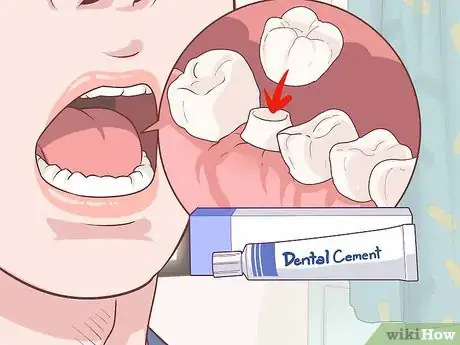
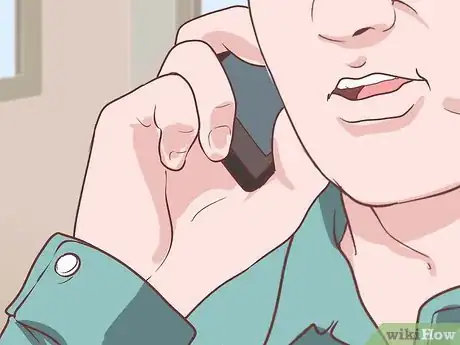
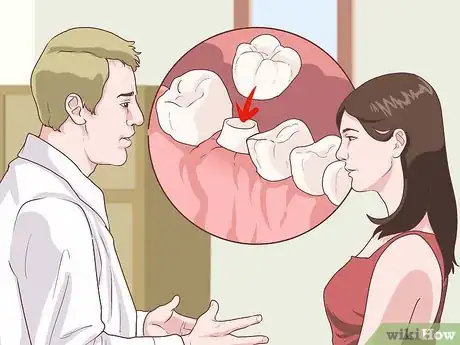
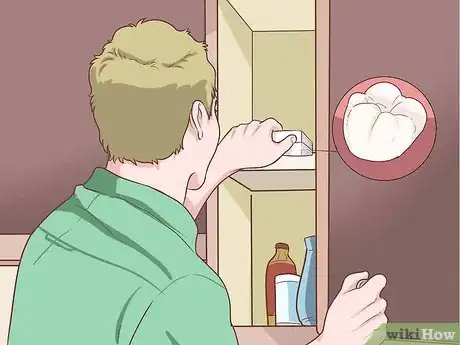
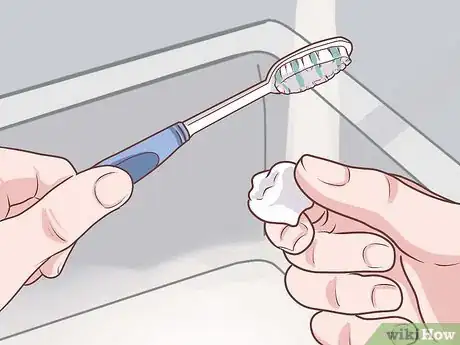

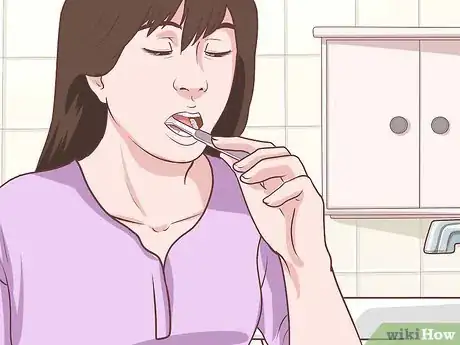
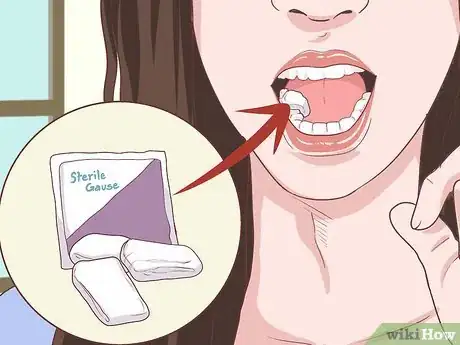
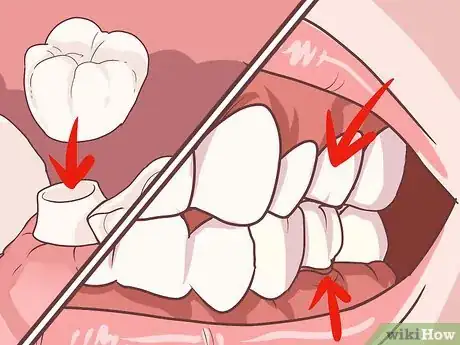
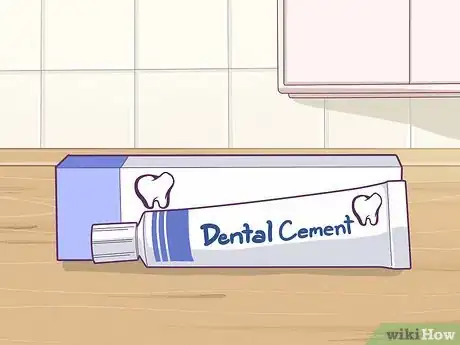
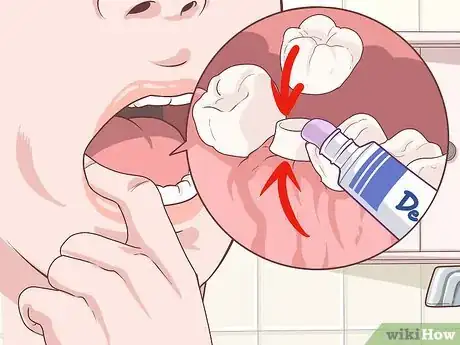
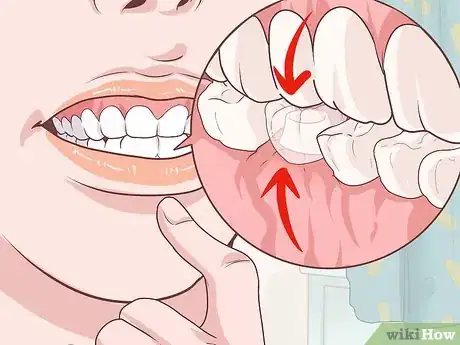
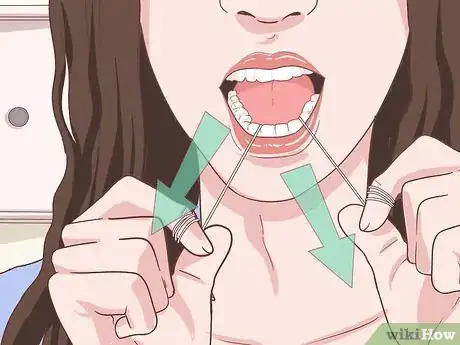


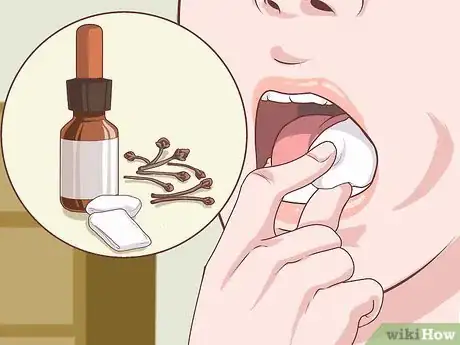
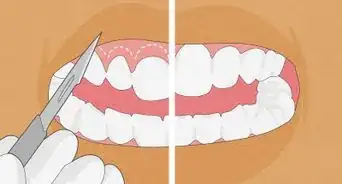
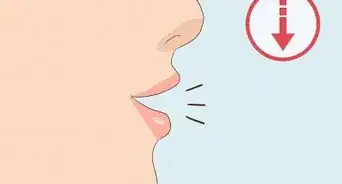
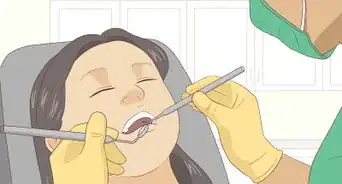

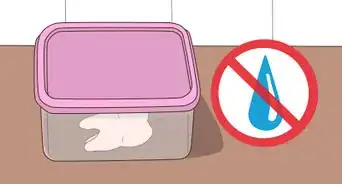
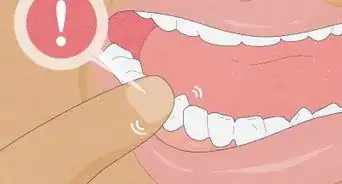


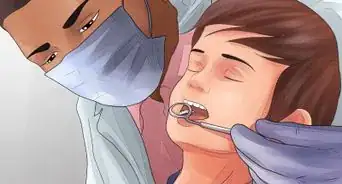












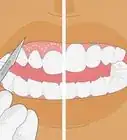
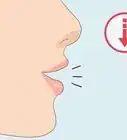
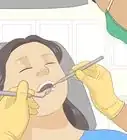




































Medical Disclaimer
The content of this article is not intended to be a substitute for professional medical advice, examination, diagnosis, or treatment. You should always contact your doctor or other qualified healthcare professional before starting, changing, or stopping any kind of health treatment.
Read More...